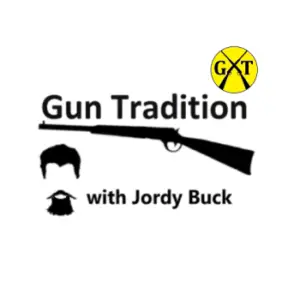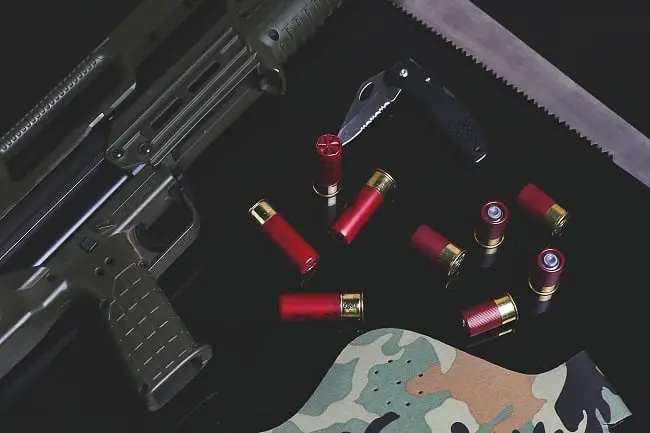I’m a student of American history. Particularly in the wars we’ve been involved in. There are certainly some weapons “outlawed” in international law in the Hauge and Geneva convention.
Neither the Geneva nor Hauge convention bans shotguns in war. In 1918, Germany tried to convince the US that shotguns were against war laws for causing undue pain and suffering on the battlefield. The shotgun has been used in war for half a millennium, and still is seen on the battlefield today.
Shotguns are not commonplace for most militaries, but used as a specialty weapon by many. Why were they nearly banned, who still uses them, and what are they good for? Read on my friend, read on!
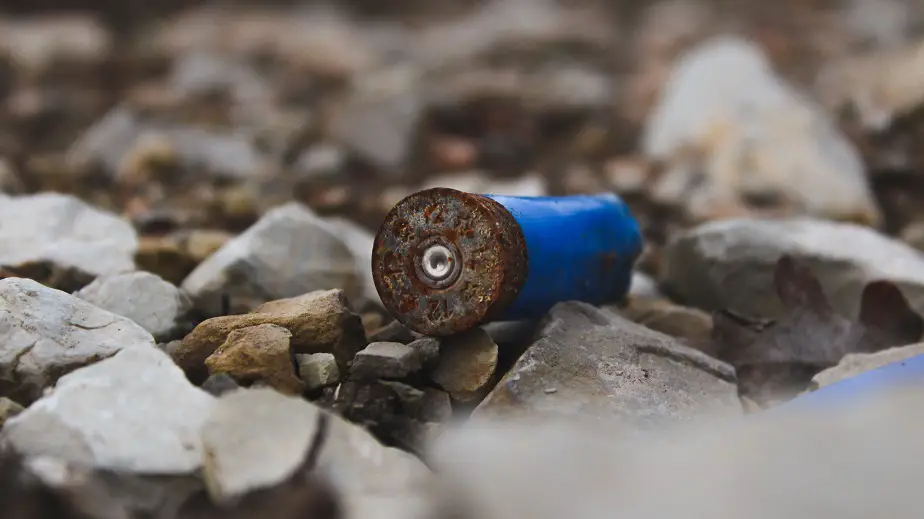
Why did Germany try to Ban Shotguns in War?
Germany and the US were deeply imbedded in battle by 1918. The battle front dad drawn on into a long-winded stalemate with neither side gaining ground and both sides loosing tremendous casualties. Germany had a slight upper hand with their advanced use of airplanes, poison gas, and shrapnel bombs.
Early in 1918 Germany had captured two US soldiers who were armed with the new shotgun. Soon After, a German telegram was relayed to the US by Switzerland. It was an official document from the German war office. Here’s what it said.
“the German Government protests against the use of shotguns by the American Army and calls attention to the fact that according to the laws of war every prisoner found to have in his possession such guns or ammunition belonging thereto forfeits his life”
The US introduced a new weapon to the field that Germany wasn’t prepared for. The 12-gauge shotgun. The combination of close-range firepower and something new on the field caught Germany completely off guard. It was so effective, they felt it was an unfair advantage.
Of course, neither the US, nor our allies thought we had gone too far. To us, it was a miracle! A providential chance had just come from one man’s personal idea. The shotgun wasn’t a new thing, but no one had thought it applicable until several years in.
Germany wasn’t without Its own share of real war crimes in World War One. Germany had gone leaps and bounds to develop new technologies that enemies and civilians without digression. They even had the famous Paris Gun, which could launch an explosive shell, although wildly inaccurate, over 20 miles.
Still, it was a stalemate. A smart US mechanical engineer came up with a solution to the stalemate. He figured that a shotgun was the perfect weapon for use in the trenches. Boy was he right! at the time, machineguns were hard and expensive to manufacture and prone to malfunction.
They were often breaking down in the dirty conditions of trench warfare. His solution was to take an existing 12-gauge shotgun and modify it to a perfect trench war machine. The designer, and the war department both thought it was a perfect solution to the stalemate.
The Winchester model 1897 12-gauge pump shotgun was fitted with a sling, a heavy-duty bayonet lug and a large, detachable bayonet. He also added a perforated metal shroud around the barrel so a soldier could hold on to the barrel while using the bayonet without burning his hand.
The shroud, used as a heat shield, also helped soldiers to hold onto the gun if an enemy combatant tried to grab hold and take the gun away from a shotgun wielding soldier. The M97, as is was called in this configuration, held 5 shots in the magazine, plus one in the chamber.
Even with only six shots total before needing to be reloaded, it immediately proved effective in the trenches of WW 1.
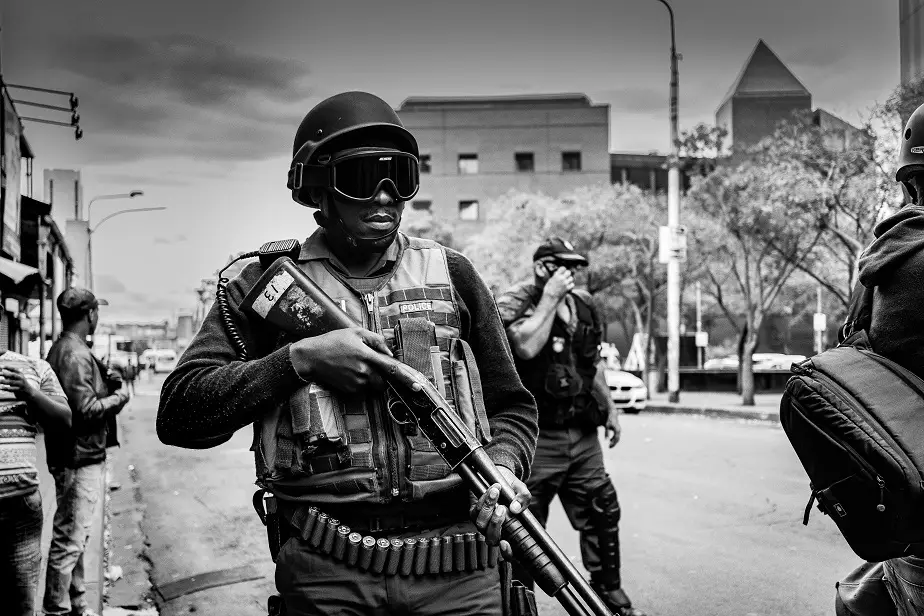
Why are Shotguns so effective on the Battlefield?
In the trenches, the shotgun was incredibly effective for two reasons. One point was just because it was something new. In war, training and equipment is generally quite standardized to a fairly standardized threat. When one side changes tactics, the other side has to play catch up.
That’s one part of it. for example, during WW1, the Germans were trained to huddle together during a heavy barrage. Well, that made easy pickins with a shotgun loaded with 00 buckshot. At first, they didn’t know what to do because their training was causing them to have higher casualties.
One American officer said “Every time a gun fired three or four Germans would go down. The more the surprise gripped them, the closer they would huddle and the deadlier was the fire.” Considering the old buckshot wasn’t as consistent as todays at 50 yards, the nine pellets could be over 3 feet spread.
Another factor was the m97’s slam fire capabilities. Slam firing is when a gun fires a bullet merely from loading it in the chamber. Today, it’s generally a dangerous problem. But in 1918, they wanted it. it wasn’t exactly just firing as it was loaded. The trigger has to be pulled.
With several old pump shotguns, including the m97, if you pull the trigger, and keep it pulled, you can fire the entire magazine just buy pumping it fast. With mine, I can fire all 6 shots in 2 seconds by slam firing. It’s a technique to shoot faster and lay down a moment of suppressive fire.
Keep in mind, that each of the military buckshot loads have 9 lead balls in them. Each lead ball is 32-caliber. With six shots, that’s 54 individual lead bullets, each with equal energy to a bullet from a military pistol at the time. So, 54 bullets in 2 seconds.
That makes one guy with a shotgun equal to about 7 guys armed with WW1 military pistols. Besides that, one slam fire session would clear the front line of enemy in a trench. At close range, the shotgun could blow the middle out of a man. Seeing that power first hand caused many Germans to give up.
During the Great War, a large onslaught of advancing German ranks was completely destroyed by 200 Americans armed with shotguns. An American sergeant captured 32 Germans after blowing the door off a pillbox and shooting the first to men who moved. The rest just gave up on the spot. They’d never seen such hand held power.
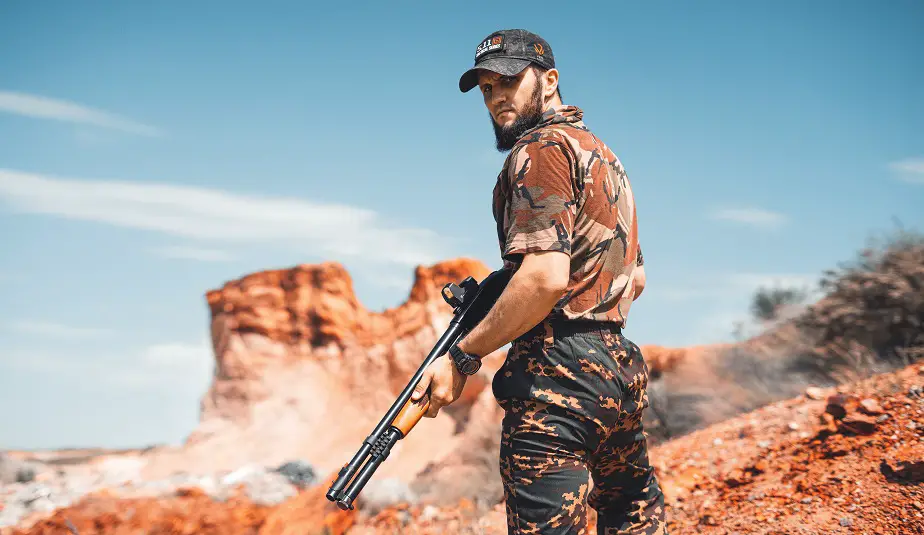
What shotguns are used in war?
The Winchester model 1897 and Remington model 10 shotguns were both modified to make the US m97 shotgun used from World War One, through the war in Viet man. Another similar shotgun was the Winchester model 12. All three were pump action, 12-gauge shotguns that were adapted for wartime.
Some governments still use these shotguns that were given to them by the US. according to records, there should still be arsenals of the M97 shotgun somewhere in the US.
The M97 has gone out, and was largely replaced by the Benelli M4. Today, the most common shotguns used by military and police worldwide are the Remington 870, and the Mossberg 500. Both are pump action shotguns that are very similar to the old Winchester model 1897.
Oddly enough, the 12 gauge is being phased out within the law enforcement of the US. It’s being replaced by the smaller 20-Gauge because it’s more commonplace now to accept smaller framed individuals in the police force. Many smaller individuals feel like the 12-gauge recoils too much for them.
Just how Powerful is a Shotgun Really?
Now it’s time for numbers. The standard shot size for military and law enforcement is 00 buckshot. 00 buckshot has a muzzle velocity of 1,275 fps with 9 pellets in the shell. Each pellet is 33-caliber, about 8.4 mm in diameter. The weight of a 33-caliber ball of pure lead is 54grains,or about 3.5 grams.

The common speed of 1275 feet per second (which used to be magnum pressure). Now, many loads use 8 pellets instead of nine and can reach 1600 fps, but nine pellets at 1275 is still the standard.
Here’s a chart of the total energy and the energy per pellet in 10-yard intervals up to the maximum effective distance of 50 yards. These numbers are approximates. I didn’t have all the numbers on hand so I referenced several sources. Different sources reported it a little differently, but they were all within 10 percent of each other.
Energy of a single pellet of pure lead 00 buckshot with a muzzle velocity of 1275 fps
| Distance-yards | Approx. energy- ft/lbs. | Approx. velocity- fps |
| 0 yards | 195 ft/lbs. | 1275fps |
| 10 yards | 173 ft/lbs. | 1225fps |
| 20 yards | 150 ft/lbs. | 1180 fps |
| 30 yards | 130 ft/lbs. | 1110 |
| 40 yards | 114 ft/lbs. | 947 fps |
| 50 yards | 101 ft/lbs. | 920 fps |
You can multiply that by 9 to see what the total energy is. Right out of the barrel, there is 1,754 ft/lbs. of energy in the whole load of buckshot. That’s a bit insane to think of. The total weight of a normal load of 00 buckshot is 486 grains, or 31.5 grams. 486 grains at 1275 feet per second has 1,754 ft/lbs. of energy.
That’s a serious amount of power.
